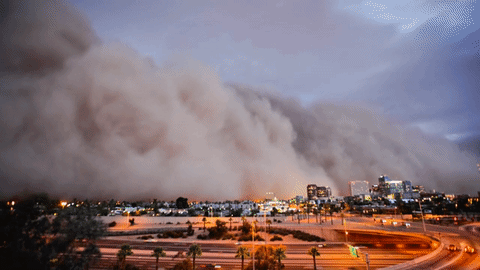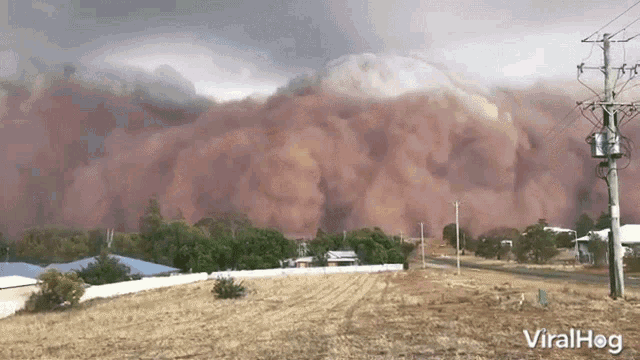CARPET REMOVAL
Do you have a garden sprayer? It will be your best tool for carpet removal.
It will be used to keep the dust “out of the air and out of your lungs!”
Put about 2-5 drops liquid soap (dish detergent, hand soap, even laundry detergent, doesn’t really matter) in about 1 gal water. You do not want lots of foam or bubbles if you shake the water up. We are just making the water a bit “sticky” and slow down evaporation/drying.
LOCK DOWN and KNOCK DOWN
Set the sprayer to its finest setting - you want to make “soft rain” - you do NOT want to make a jet of water. You’ll let the “rain” fall onto surfaces that you want to “lock down” the dust and dirt. Don’t “shoot” the water at the dirt - that’ll just push the dry dirt UP into the air. Let the water fall on the dirt, let it soak in, mist a bit more - until it looks “wet”… you don’t need puddles or drips or streams of water on the surface. Just try to cover it all - and try to keep it damp - a fine layer of water can evaporate quickly to keep an eye on it.
IF dust is in the air, mist the air! The dust will get wet and heavy and fall. We call this “knock down”. You can mist where your’e working - cutting vacuuming, rolling, bagging, etc…
Once you figure out that WATER MIST is your friend,
you’ll use it a lot more than you think.
It works.
REMOVE CARPET
STEP 1.A. Prep the room - Obviously, the contents need to be out. Or, at least they are on one side of the room, and you can remove carpet from the empty side. BUT you might be making too much dust and it’ll get on the CLEAN contents! So, it really is BETTER to empty contents from the room entirely - or cover them up (which is not explained here… and YES there is a method for protecting and cleaning and moving contents).
STEP 1.B. Prep the room - Remove baseboard and threshold strips if they are on top the carpet, disconnect perimeter of carpet from tack strips. note: vac and mist while lifting the edge is helpful! See other instructions on misting and vacuuming.
STEP 2. MIST the carpet once, works best if you do in two directions, they way water “falls”, this helps cover more of the fibers, etc. IF top of carpet feels dry after a few mins, apply again - the goal is keep just moist enough to “lock” the dust down - NOT saturate the fibers and make it noticeably heavy from water.
STEP 3. Cut the carpet in manageable size long strips, about 4-6 ft wide, depending on area, length etc. Cut the pad below also. Carpet knives are made for this. Heavy construction sizers, good strong bladed utility knife.
NOTE: Have a staple puller, a pair of adjustable (curved) pliers, and a thin flat screwdriver for when you need to remove the staples that hold the pad to the sub flooring/luan.
PPE - Protect YOUR health while you do the work
This is where you want to figure out what breathing protection is desirable and works for you. MOST people can easily wear a disposable N-100 (my fave is the 3M Particulate Respirator 8233, N100, has adjustable straps, great seal gasket, exhalation valve, about $10-15 each. Very comfy and you can do semi-strenuous physical labor.)
These are FAR better than the typical N-95 that we are now used to for COVID situations.
If you don’t have access to N100, the N95 that fits “tight” is your next choice. Since this is not a “worker” (employer/employee) situation, there are no “rules” - just recommendations. NOTE: IF you are doing this as an employee, there are clear and strict OSHA regulations to follow, including training, a written plan, fit-testing, and even medical approval to wear and work with a respirator!
STEP 4. Two People working together makes this easy and efficient. Roll a carpet strip with the pad at the same time. You will probably roll up about 6-10 ft before it gets too large to easily manage and carry away. Do what is easy for you and your helper.
As you roll, mist the UNDER-side of the carpet and pad, and the TOP of the wood floor. You can also have someone vac the floor right under the rolled portion of carpet AS you roll.
Keep the dirt debris dust wet. “Roll a foot, vac the floor at the bottom of the roll, mist the floor and a bit of the pad, roll, vac, mist, roll, mist….”. You are misting the bottom of the pad and the floor at this point. The carpet is on the inside of the roll and does not need to be misted. This is NOT time consuming…
You’ll get the hang of what works best for you after a few feet of rolling.
STEP 5. When you get to a point where the roll is “large” for you, heavy, big to lift up, you cut the end - be careful this is where the carpet and pad like to Unroll by themselves - making a mess of what you just did so neatly! DUCT TAPE the roll to keep it rolled up. Like misting, you’ll get the hang of this - wrap a long piece of the tape two or three times around the rolled carpet. Often, especially if you’re carpet roll is 5 or 6 ft wide, it’s best to tape it in two places - one near each end to keep it from flapping open!
STEP 6. Remove carpet rolls. Depending on the location, you might want to put the roll of carpet in a large contractor bag (or wrap it with plastic and duct tape - like a gift wrap! Nice and secure, no leaky joints!). Otherwise, as you carry, the dirt from the ends and the outside of this carpet roll will definitely fall off - in a clean area where you don’t want it! It’s a Murphy’s Law - so don’t take chances - bag/wrap your debris before you leave the work area! You can dispose of this however your local city ordinances allow - some will pick it up from the tree lawn, some require you to take it to a waste collection site. But please follow the rules… carpet removal makes a LOT of waste.
Repeat Repeat Repeat.
STEP 7. WHILE you and your helper are rolling up the carpet, when there is time, make sure someone vacuums the bare wood that you’ve just uncovered. You also want to do a damp mop or wipe - your goal here is to make the flooring as clean as possible - “white glove” - no visible dirt, dust or debris. (Of course, the grain and texture of the wood makes it impossible to get this “perfectly” clean like you get a kitchen vinyl floor, but do your best). If there are three of you, the third person can do this while you roll and carry away the carpet.
VACUUMS - lots of choices.
I have no problem using a ShopVac, with the proper improved “HEPA” filter inside, and a foam pre-filter, and a “drywall dust” collector bag. These have high suction power, large collection volume, and are easy to maneuver. ANY “good” vac will work - but remember - the HOSE will be very dirty when you are done! This means- do not drop or drag it -the junk inside WILL fall out (another Murphy’s Law!). IF you can’t clean and decon the tools and hose in the room where you worked, put them in a large bag or container to take them out of the work space. ALSO - if you move dirty vac tools, Tape the ends of the hose (remember, there are two ends to a hose!), tape the tools, etc. THEN put them in a large bag or container to move them elsewhere. Remember to clean the BOTTOM and the WHEELS of the VAC!!! They are very very dirty! (Everyone forgets this part! every. one.) Empty the vac OUTSIDE - or in the work space - CAREFULLY! The dust inside is very loose and WILL fly all over when you open the vac canister.
PPE - Protect yourself MORE
WEAR your respiratory protection N100 while you do this - you can mist also. Place the collector bag in another large garbage bag - be careful when you tie this up - closing the bag is like a bellows and the dust Inside the bag WILL blow out in your face as you tighten and close up the bag! Every. Time. Do the same with the profilers and HEPA filters. Clean/Wipe the inside of the vac and get it ready for the next time you use it. When you’re done with all the carpet removal, and IF you had a good PRE-filter, MOST HEPA filters can be re-used! You can clean them, with another vac! They last a long time. Some can even be washed with soap and water! But they are costly so it’s worth it if you’re going to be doing this more.
There is much more to know about vacuums.
Be careful.
They work if you use them correctly.




